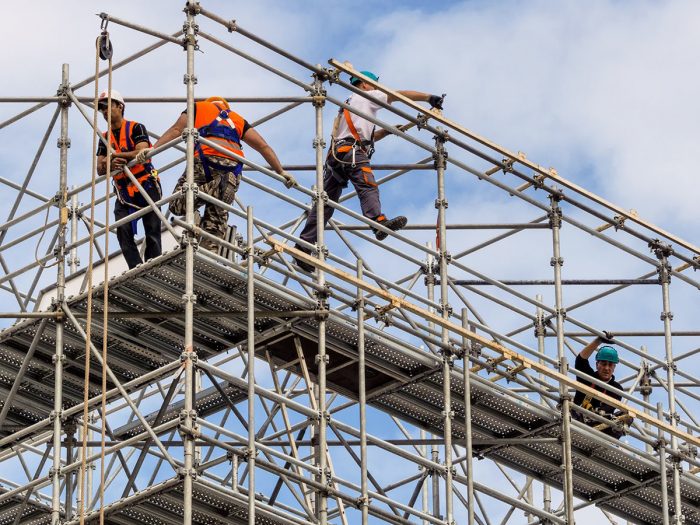
Second to Agriculture, Construction is the most dangerous industry in Ireland. In this blog, we run down the top ten causes of workplace injury in the sector.
Construction workers work in an extremely risky sector which, according to recent surveys, accounts for nearly 20 percent of all annual workplace fatalities. Furthermore, statistics show that four in every hundred construction workers are injured on the job annually.
These worrying statistics reflect what is a very high-risk work environment. Surrounded by building materials, tools, and machinery, construction workers can find themselves constantly in the line of fire.
The most common construction site accidents are:
1. Falls from Heights or Scaffolding – Construction workers are often required to work at extreme heights, typically on scaffolding, but also on ladders, on window ledges, on roofs and scaling cranes. These accidents account for 34% of all on-the-job construction fatalities.
2. Slips & Falls – There are many on-site hazards that can lead to dangerous slips, trips, or falls including stray tools, loose wires, and uneven or ‘potholey’ ground.
3. Electrocutions – Construction sites are a work in progress, and as such, workers are often surrounded by exposed wiring and power lines, which if they come into contact with them, can lead to electric shocks, if not electrocution.
4. Falling Debris & Materials – On multi-storey projects, it is common for falling tools, building materials, or debris to strike workers below.
5. Getting Trapped (in-between objects or materials) – Construction sites are filled with heavy plant, tools, and materials, under and in-between which workers can find themselves wedged or trapped. Apart from the physical impact, these incidents can often result in long-term psychological traumas.
6. Fires & Explosions – Unfinished piping, leaking gases, and sundry electrical systems, all leave workers exposed to fires and worse, explosions.
7. Exhaustion – Long hours of hard, physical labour, often in extremely trying outdoors conditions, can result in workers suffering from exhaustion.
8. Accidents involving Machinery – Construction requires heavy plant and machinery including bulldozers, drills and cranes. It only takes the smallest lack of concentration for a worker to have a serious accident with one of these tools.
9. Accidents involving Vehicles – Again, driver only has to take their eye off the wheel, road, or pathway for a couple of seconds for a life-changing accident to occur.
10. Trench Collapses – Trenches are often an on-site necessity, which, if they collapse while a worker is inside, can cause serious injury including suffocation.
The Consequences
Workplace accidents in construction can have a ripple affect, impacting not just the health and lives of those injured, but also that of their families. Accidents and injuries can have far-reaching financial consequences, particularly for those workers who don’t subscribe to private health insurance. Expensive medical bills, loss of earnings, and indeed loss of future earning ability can all seriously impact construction workers livelihoods.
Many on-site accidents can be avoided through effective Health and Safety Management. By employing robust occupational health and safety protocols, construction companies can help safeguard the health, livelihood and future of their workforce.
What Next?
ISO 45001 Health and Safety Management System Standard as developed by a committee of occupational health and safety experts. An internationally recognised benchmark for excellence in occupational health and safety, if has helped many organisations worldwide to achieve optimal OH&S performance.
Certifying to ISO 45001:2018 is crucial for construction companies wishing to improve occupational health and safety, eliminate hazards and minimise OH&S risks. For more information on this and other key ISO standards, visit the CG Business Consulting website at


